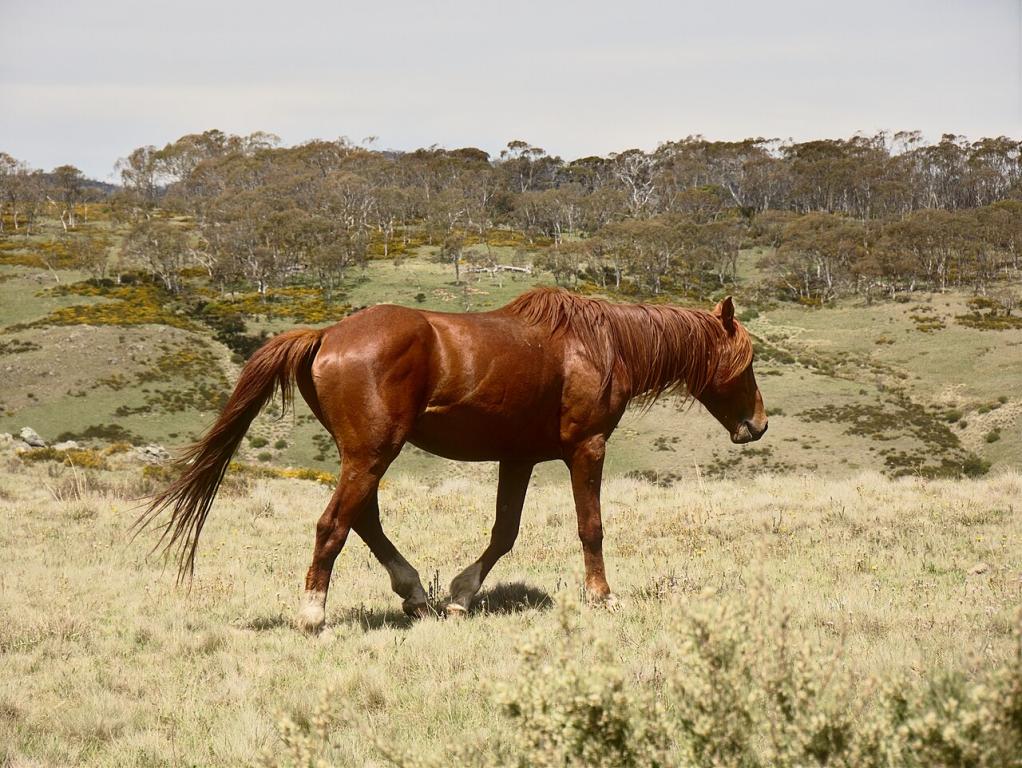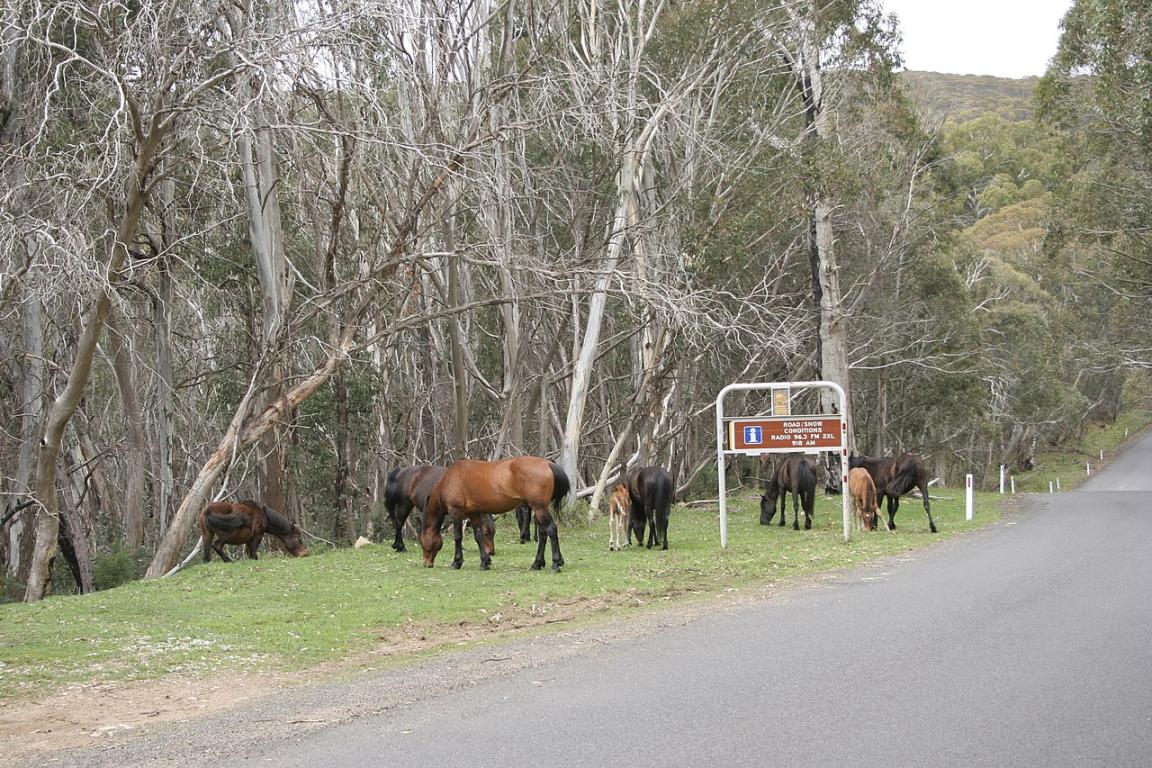
Continent: Oceania
Country: Australia
Weight: 350 – 500 kg
Height: 135 – 150 cm

The Brumby originates from Australia, descending from domestic horses introduced from 1788 onwards with the British First Fleet.
These horses came mainly from the United Kingdom, the Cape of Good Hope, and India, and included a variety of bloodlines: Thoroughbreds, Shetland and Welsh ponies, Arabians, Hackneys, and even heavy draft horses for agricultural work.
Over time, many horses escaped or were deliberately released into the wild, forming feral populations. Isolation and natural selection in Australia’s diverse environments (deserts, mountains, forested areas) shaped the Brumby into a hardy, enduring horse perfectly adapted to extreme conditions.
Today, it is regarded both as a symbol of Australian cultural heritage and as a species to be managed in order to preserve local ecosystems.
The Brumby is not “bred” in the traditional sense but lives wild in several regions of Australia.
Some of these populations are managed through capture, relocation, or adoption programs to limit their environmental impact and preserve a viable number of individuals.
The Brumby holds a unique genetic value due to its history and natural selection.
British settlers of the First Fleet brought the first domestic horses to Australia for transport, agriculture, and cavalry.
These animals came mainly from Great Britain, but also from the Cape of Good Hope (South Africa) and India.
Imports multiplied: Thoroughbreds, Arabian horses, Hackneys, Welsh and Shetland ponies, as well as heavy breeds (Shire, Clydesdale) for agricultural work.
Horses from America (Quarter Horse, Morgan) and Asia (Java, Timor) further enriched the genetic pool.
These crosses produced a robust and versatile horse adapted to Australia’s varied climates.
Horses escaped or were released into the wild, voluntarily (extensive grazing, farm bankruptcies) or as a result of wars.
The absence of natural predators encouraged rapid population growth, particularly in Queensland, the Northern Territory, and the Australian Alps.
Brumbies were captured and trained as riding horses, carriage horses, or working horses.
They were also exported as war horses (Australian Light Horse) during World War I.
Large numbers caused damage to pastures, native flora, and water sources.
Governments introduced control programs: captures, sales, and mass culling (sometimes by aerial shooting).
Brumbies became a cultural symbol: immortalized in Australian poetry (The Man from Snowy River) and popularized by the novel and film The Silver Brumby.
But they are also considered an invasive species by ecologists, sparking a national debate between environmental preservation and heritage protection.
- The Brumby remains a mythical and wild figure of the Australian bush, symbolizing freedom, resilience, and adaptation to extreme conditions.
- Its future depends on balancing ecological management with respect for cultural heritage.
"This mix of liveliness, endurance, and hardiness explains why some tamed Brumbies make excellent leisure or light work horses."
In summary, the long-term survival of the Brumby will depend on finding a balance between cultural conservation and ecological management.
The Brumby is renowned for its exceptional hardiness, inherited from natural selection in demanding environments.
Can live 25–30 years in captivity, slightly less in the wild.
Overall, the Brumby is a healthy, enduring, and low-maintenance horse when properly managed after capture.